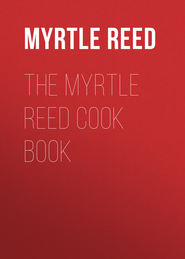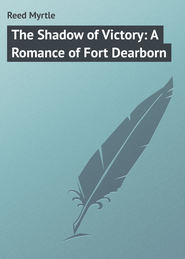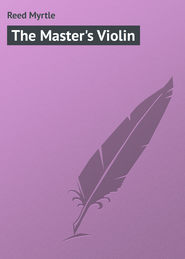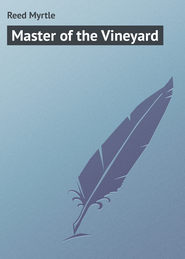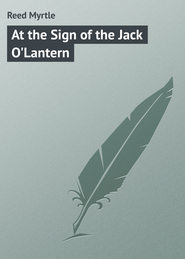По всем вопросам обращайтесь на: info@litportal.ru
(©) 2003-2024.
✖
Threads of Grey and Gold
Настройки чтения
Размер шрифта
Высота строк
Поля
Threads of Grey and Gold
Myrtle Reed
Reed Myrtle
Threads of Grey and Gold
To the Readers of
THE ROMANCES OF MYRTLE REED
– A world-wide circle comprising probably not less than two million sympathetic admirers —
This volume, which presents some of the writer’s most typical utterances – utterances characterised by the combination of wisdom, humour, and sentiment that belongs to all the writings of the gifted author,
IS DEDICATED BY
THE EDITOR.
Chicago,
January, 1913.
In Memory of
A WEAVER OF DREAMS
A tribute to Myrtle Reed in recognition of her beautiful and valuable contributions to English literature.
As the spinner of silk weaves his sunbeams of gold,
Blending sunset and dawn in its silvery fold,
So she wove in the woof of her wonderful words
The soft shimmer of sunshine and music of birds.
With the radiance of moonlight and perfume of flowers,
She lent charm to the springtime and gladdened the hours.
She spoke cheer to the suffering, joy to the sad;
She gave rest to the weary, made the sorrowful glad.
The sweet touch of her sympathy soothed every pain,
And her words in the drouth were like showers of rain.
For she lovingly poured out her blessings in streams
As a fountain of waters – a weaver of dreams.
Her bright smiles were bejewelled, her tears were empearled,
And her thoughts were as stars giving light to the world;
Her fond dreams were the gems that were woven in gold,
And the fabric she wrought was of value untold.
Every colour of beauty was radiantly bright,
Blending faith, hope, and love in its opaline light.
And she wove in her woof the great wealth of her heart,
For the cord of her life gave the life to each part;
And the beauty she wrought, which gave life to the whole,
Was her spirit made real – she gave of her soul.
So the World built a temple – a glorious shrine —
A Taj Mahal of love to the woman divine.
ADDISON BLAKELY.
How the World Watches the New Year Come In
The proverbial “good resolutions” of the first of January which are usually forgotten the next day, the watch services in the churches, and the tin horns in the city streets, are about the only formalities connected with the American New Year. The Pilgrim fathers took no note of the day, save in this prosaic record: “We went to work betimes”; but one Judge Sewall writes with no small pride of the blast of trumpets which was sounded under his window, on the morning of January 1st, 1697.
He celebrated the opening of the eighteenth century with a very bad poem which he wrote himself, and he hired the bellman to recite the poem loudly through the streets of the town of Boston; but happily for a public, even now too much wearied with minor poets, the custom did not become general.
In Scotland and the North of England the New Year festivities are of great importance. Weeks before hand, the village boys, with great secrecy, meet in out of the way places and rehearse their favourite songs and ballads. As the time draws near, they don improvised masks and go about from door to door, singing and cutting many quaint capers. The thirty-first of December is called “Hogmanay,” and the children are told that if they go to the corner, they will see a man with as many eyes as the year has days. The children of the poorer classes go from house to house in the better districts, with a large pocket fastened to their dresses, or a large shawl with a fold in front.
Each one receives an oaten cake, a piece of cheese, or sometimes a sweet cake, and goes home at night heavily laden with a good supply of homely New Year cheer for the rest of the family.
The Scottish elders celebrate the day with a supper party, and as the clock strikes twelve, friend greets friend and wishes him “a gude New Year and mony o’ them.”
Then with great formality the door is unbarred to let the Old Year out and the New Year in, while all the guests sally forth into the streets to “first foot” their acquaintances.
The “first foot” is the first person to enter a house after midnight of December 31st. If he is a dark man, it is considered an omen of good fortune. Women generally are thought to bring ill luck, and in some parts of England a light-haired man, or a light-haired, flat-footed man is preferred. In Durham, this person must bring a piece of coal, a piece of iron, and a bottle of whiskey. He gives a glass of whiskey to each man and kisses each woman.
In Edinburgh, a great crowd gathers around the church in Hunter Square and anxiously watches the clock. There is absolute silence from the first stroke of twelve until the last, then the elders go to bed, but the young folks have other business on hand. Each girl expects the “first foot” from her sweetheart and there is occasionally much stratagem displayed in outwitting him and arranging to have some grandmother or serving maid open the door for him.
During the last century, all work was laid aside on the afternoon of the thirty-first, and the men of the hamlet went to the woods and brought home a lot of juniper bushes. Each household also procured a pitcher of water from “the dead and living ford,” meaning a ford in the river by which passengers and funerals crossed. This was brought in perfect silence and was not allowed to touch the ground in its progress as contact with the earth would have destroyed the charm.
The next morning, there were rites to protect the household against witchcraft, the evil eye, and other machinations of his satanic majesty. The father rose first, and, taking the charmed water and a brush, treated the whole family to a generous sprinkling, which was usually acknowledged with anything but gratitude.
Then all the doors and windows were closed, and the juniper boughs put on the fire. When the smoke reached a suffocating point, the fresh air was admitted. The cattle were fumigated in the same way and the painful solemnities of the morning were over.
The Scots on the first of the year consult the Bible before breakfast. They open it at random and lay a finger on a verse which is supposed to be, in some way, an augury for the coming year. If a lamp or a candle is taken out of the house on that day, some one will die during the year, and on New Year’s day a Scotchman will neither lend, borrow nor give anything whatsoever out of his house, for fear his luck may go with it, and for the same reason the floor must not be swept. Even ashes or dirty water must not be thrown out until the next day, and if the fire goes out it is a sign of death.
The ancient Druids distributed among the early Britons branches of the sacred mistletoe, which had been cut with solemn ceremony in the night from the oak trees in a forest that had been dedicated to the gods.
Among the ancient Saxons, the New Year was ushered in with friendly gifts, and all fighting ceased for three days.
In Banffshire the peat fires are covered with ashes and smoothed down. In the morning they are examined closely, and if anything resembling a human footprint is found in the ashes, it is taken as an omen. If the footprint points towards the door, one of the family will die or leave home during the year. If they point inward, a child will be born within the year.
In some parts of rural England, the village maidens go from door to door with a bowl of wassail, made of ale, roasted apples, squares of toast, nutmeg, and sugar. The bowl is elaborately decorated with evergreen and ribbons, and as they go they sing:
“Wassail, wassail to our town,
The cup is white and the ale is brown,
The cup is made of the ashen tree,
And so is the ale of the good barley.
“Little maid, little maid, turn the pin,
Open the door and let us in;
God be there, God be here;
Myrtle Reed
Reed Myrtle
Threads of Grey and Gold
To the Readers of
THE ROMANCES OF MYRTLE REED
– A world-wide circle comprising probably not less than two million sympathetic admirers —
This volume, which presents some of the writer’s most typical utterances – utterances characterised by the combination of wisdom, humour, and sentiment that belongs to all the writings of the gifted author,
IS DEDICATED BY
THE EDITOR.
Chicago,
January, 1913.
In Memory of
A WEAVER OF DREAMS
A tribute to Myrtle Reed in recognition of her beautiful and valuable contributions to English literature.
As the spinner of silk weaves his sunbeams of gold,
Blending sunset and dawn in its silvery fold,
So she wove in the woof of her wonderful words
The soft shimmer of sunshine and music of birds.
With the radiance of moonlight and perfume of flowers,
She lent charm to the springtime and gladdened the hours.
She spoke cheer to the suffering, joy to the sad;
She gave rest to the weary, made the sorrowful glad.
The sweet touch of her sympathy soothed every pain,
And her words in the drouth were like showers of rain.
For she lovingly poured out her blessings in streams
As a fountain of waters – a weaver of dreams.
Her bright smiles were bejewelled, her tears were empearled,
And her thoughts were as stars giving light to the world;
Her fond dreams were the gems that were woven in gold,
And the fabric she wrought was of value untold.
Every colour of beauty was radiantly bright,
Blending faith, hope, and love in its opaline light.
And she wove in her woof the great wealth of her heart,
For the cord of her life gave the life to each part;
And the beauty she wrought, which gave life to the whole,
Was her spirit made real – she gave of her soul.
So the World built a temple – a glorious shrine —
A Taj Mahal of love to the woman divine.
ADDISON BLAKELY.
How the World Watches the New Year Come In
The proverbial “good resolutions” of the first of January which are usually forgotten the next day, the watch services in the churches, and the tin horns in the city streets, are about the only formalities connected with the American New Year. The Pilgrim fathers took no note of the day, save in this prosaic record: “We went to work betimes”; but one Judge Sewall writes with no small pride of the blast of trumpets which was sounded under his window, on the morning of January 1st, 1697.
He celebrated the opening of the eighteenth century with a very bad poem which he wrote himself, and he hired the bellman to recite the poem loudly through the streets of the town of Boston; but happily for a public, even now too much wearied with minor poets, the custom did not become general.
In Scotland and the North of England the New Year festivities are of great importance. Weeks before hand, the village boys, with great secrecy, meet in out of the way places and rehearse their favourite songs and ballads. As the time draws near, they don improvised masks and go about from door to door, singing and cutting many quaint capers. The thirty-first of December is called “Hogmanay,” and the children are told that if they go to the corner, they will see a man with as many eyes as the year has days. The children of the poorer classes go from house to house in the better districts, with a large pocket fastened to their dresses, or a large shawl with a fold in front.
Each one receives an oaten cake, a piece of cheese, or sometimes a sweet cake, and goes home at night heavily laden with a good supply of homely New Year cheer for the rest of the family.
The Scottish elders celebrate the day with a supper party, and as the clock strikes twelve, friend greets friend and wishes him “a gude New Year and mony o’ them.”
Then with great formality the door is unbarred to let the Old Year out and the New Year in, while all the guests sally forth into the streets to “first foot” their acquaintances.
The “first foot” is the first person to enter a house after midnight of December 31st. If he is a dark man, it is considered an omen of good fortune. Women generally are thought to bring ill luck, and in some parts of England a light-haired man, or a light-haired, flat-footed man is preferred. In Durham, this person must bring a piece of coal, a piece of iron, and a bottle of whiskey. He gives a glass of whiskey to each man and kisses each woman.
In Edinburgh, a great crowd gathers around the church in Hunter Square and anxiously watches the clock. There is absolute silence from the first stroke of twelve until the last, then the elders go to bed, but the young folks have other business on hand. Each girl expects the “first foot” from her sweetheart and there is occasionally much stratagem displayed in outwitting him and arranging to have some grandmother or serving maid open the door for him.
During the last century, all work was laid aside on the afternoon of the thirty-first, and the men of the hamlet went to the woods and brought home a lot of juniper bushes. Each household also procured a pitcher of water from “the dead and living ford,” meaning a ford in the river by which passengers and funerals crossed. This was brought in perfect silence and was not allowed to touch the ground in its progress as contact with the earth would have destroyed the charm.
The next morning, there were rites to protect the household against witchcraft, the evil eye, and other machinations of his satanic majesty. The father rose first, and, taking the charmed water and a brush, treated the whole family to a generous sprinkling, which was usually acknowledged with anything but gratitude.
Then all the doors and windows were closed, and the juniper boughs put on the fire. When the smoke reached a suffocating point, the fresh air was admitted. The cattle were fumigated in the same way and the painful solemnities of the morning were over.
The Scots on the first of the year consult the Bible before breakfast. They open it at random and lay a finger on a verse which is supposed to be, in some way, an augury for the coming year. If a lamp or a candle is taken out of the house on that day, some one will die during the year, and on New Year’s day a Scotchman will neither lend, borrow nor give anything whatsoever out of his house, for fear his luck may go with it, and for the same reason the floor must not be swept. Even ashes or dirty water must not be thrown out until the next day, and if the fire goes out it is a sign of death.
The ancient Druids distributed among the early Britons branches of the sacred mistletoe, which had been cut with solemn ceremony in the night from the oak trees in a forest that had been dedicated to the gods.
Among the ancient Saxons, the New Year was ushered in with friendly gifts, and all fighting ceased for three days.
In Banffshire the peat fires are covered with ashes and smoothed down. In the morning they are examined closely, and if anything resembling a human footprint is found in the ashes, it is taken as an omen. If the footprint points towards the door, one of the family will die or leave home during the year. If they point inward, a child will be born within the year.
In some parts of rural England, the village maidens go from door to door with a bowl of wassail, made of ale, roasted apples, squares of toast, nutmeg, and sugar. The bowl is elaborately decorated with evergreen and ribbons, and as they go they sing:
“Wassail, wassail to our town,
The cup is white and the ale is brown,
The cup is made of the ashen tree,
And so is the ale of the good barley.
“Little maid, little maid, turn the pin,
Open the door and let us in;
God be there, God be here;






